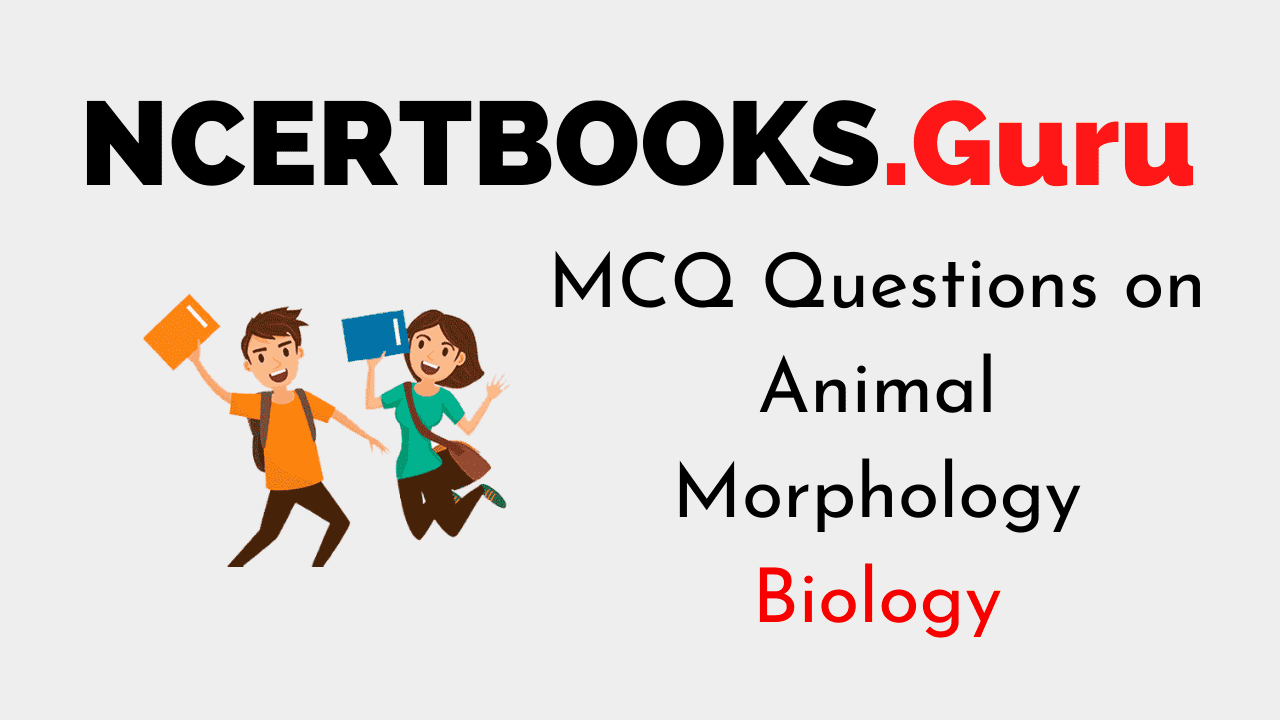MCQ Questions on Animal Morphology
1. Tendons and ligaments are made of
(a) Special connective tissue
(b) Epithelial tissues
(c) Dense regular connective tissue
(d) Loose conductive tissue
Answer
Answer: (c) Dense regular connective tissue
2. Where are intercalated discs found?
(a) Skeletal muscles
(b) Tendons
(c) Spinal cord
(d) Cardiac muscles
Answer
Answer: (d) Cardiac muscles
3. Certain mummies are well preserved even after hundreds of years because
(a) Yellow elastic fibres are intact
(b) Yellow elastic fibres are destroyed
(c) White fibrous tissues are intact
(d) White fibrous tissues are destroyed
Answer
Answer: (a) Yellow elastic fibres are intact
4. Macrophages are a type of
(a) White blood cell
(b) Stem cell
(c) Fat cell
(d) Bone cell
Answer
Answer: (a) White blood cell
5. ____________ is present mostly at sites where filtration and diffusion occurs.
(a) Simple columnar epithelia
(b) Bone marrow
(c) Simple squamous epithelium
(d) None of the above
Answer
Answer: (c) Simple squamous epithelium
6. Chromatophores are found in _______
(a) Squids
(b) Humans
(c) Birds
(d) Dogs
Answer
Answer: (a) Squids
7. The major protein in plasma is ______
(a) Ovalbumin
(b) Albumin
(c) Desmin
(d) None of the above
Answer
Answer: (b) Albumin
8. The largest quantity of extracellular materials are found in _____
(a) Nerve fibres
(b) Bone tissue
(c) Areolar tissue
(d) None of the above
Answer
Answer: (c) Areolar tissue
9. Pheretima is a genus of __________
(a) Crickets
(b) Earthworms
(c) Rose
(d) None of the above
Answer
Answer: (b) Earthworms
10. What type of glands are sebaceous glands?
(a) Exocrine Gland
(b) Endocrine Gland
(c) Pineal Gland
(d) None of the above
Answer
Answer: (a) Exocrine Gland
11. Regeneration is the most limited in ____
(a) Liver cells
(b) Brain cells
(c) Stem cells
(d) None of the above
Answer
Answer: (b) Brain cells
12. The study of tissues is called
(a) Histology
(b) Pathology
(c) Endocrinology
(d) Cytology
Answer
Answer: (a) Histology
13. Smooth muscles are
(a) Involuntary
(b) Voluntary
(c) Striated
(d) None of the above
Answer
Answer: (a) Involuntary
14. How many hearts does an octopus have?
(a) 3
(b) 2
(c) 4
(d) 1
Answer
Answer: (a) 3
15. Hemotoxic venom, such as the one found in cobra induce the destruction of
(a) Red blood cells
(b) Muscle tissue
(c) Bone tissue
(d) All of the above
Answer
Answer: (a) Red blood cells
